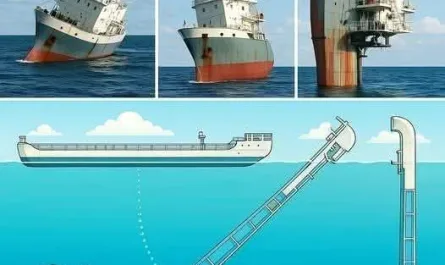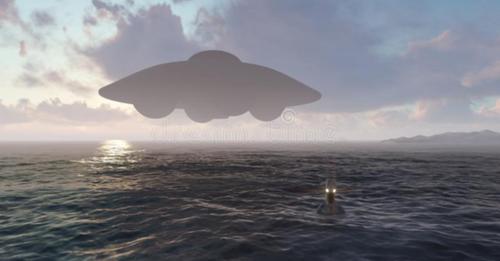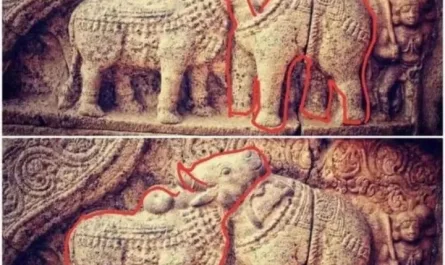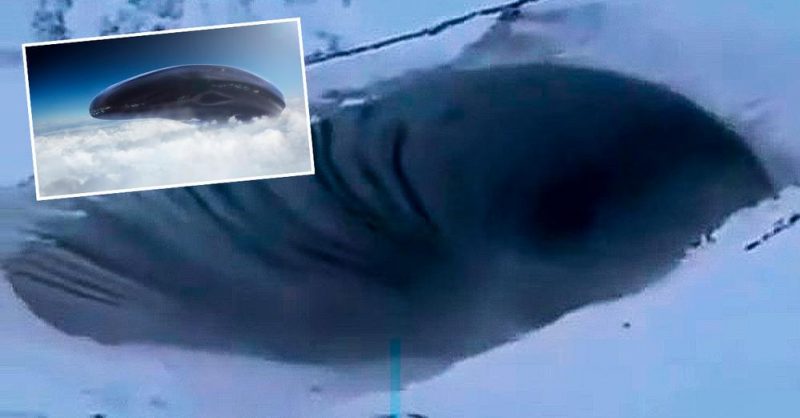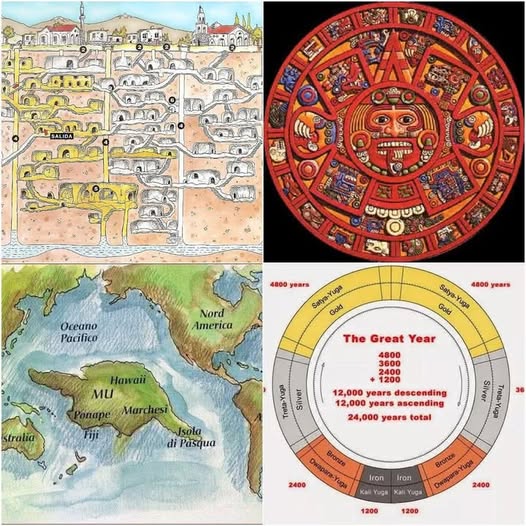
Actual Diagram Of Derinkuyu: The Underground City (READ BELOW) 🤯‼️
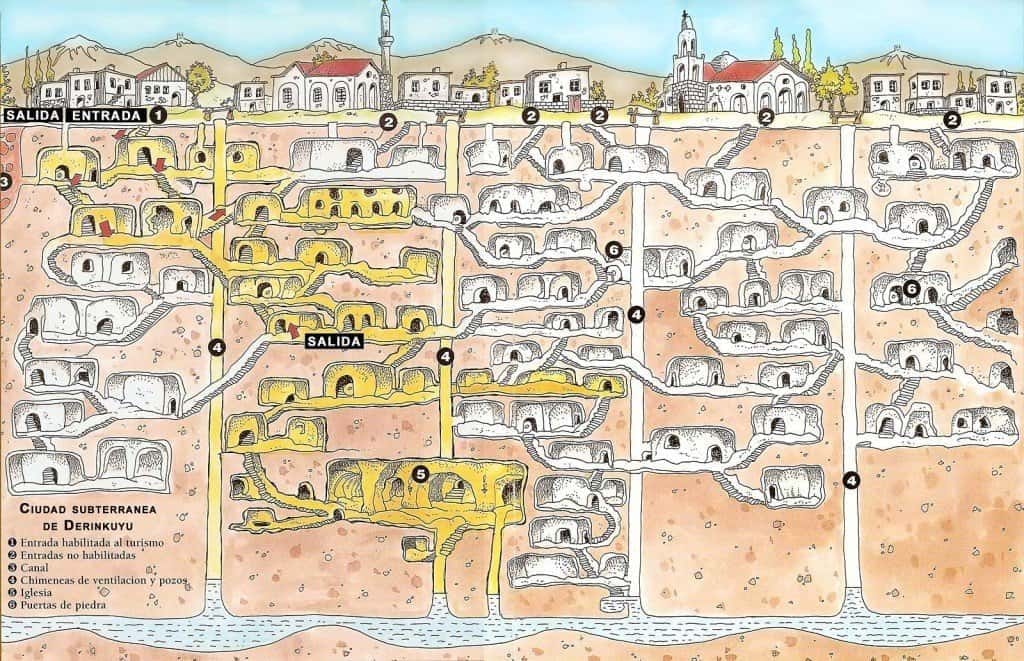
▫️ Deep under the Turkish town of Derinkuyu, there’s an entire world reaching 85 meters (279 ft) into the earth. Covering a vast area and with a network of labyrinthine tunnels, Derinkuyu was lost to history until 1963 when a man accidentally discovered a tunnel behind one of the walls of his house. The underground city is actually 18 stories deep, with wells, chapels, stables, schools and more, and is said to have been able to accommodate up to 20,000 people.
Carved into the region’s soft volcanic rock, known as tuff, within the Cappadocia region of Turkey, creating the underground city was an incredible feat. The complex is a stunning example of ancient engineering, complete with ventilation shafts, wells, water tanks, and an extensive network of passages and tunnels.
It is believed that more than 600 entrances to the city exist, most of them hidden, to the vast underground city which covered 445 km2 (172 mi2). There are stables, apartments, communal rooms, chapels, tombs, and even wine and oil presses. The passageways are “secured” by 1,000 pound (454 kg) stone doors that could only be opened from the inside.
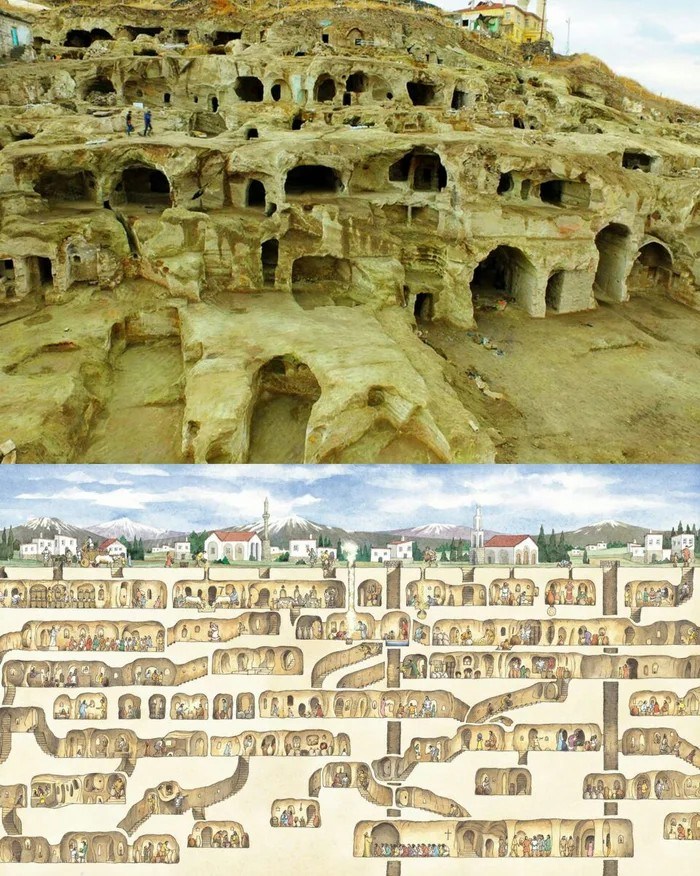
In the interest of added security, each level could be isolated from the others, even though all levels were able to access one another. “Those living on the bottom levels… were able to cut off the water supply to the upper and ground levels, preventing enemies from poisoning the supply,” explained a report in IFLS. “The tunnels could be blocked from the inside with round rolling stone doors, and the passageways themselves were narrow to force any invaders to line up one at a time.”
What is most astonishing is that this vast network of tunnels and living spaces was abandoned and forgotten. IFLS reported that Derinkuyu was only rediscovered in 1963, when a local man used a sledgehammer on his wall and came face to face with an entire underground world carved into the soft rock. It was added to the UNESCO World Heritage List as a site entitled Göreme National Park and the Rock Sites of Cappadocia.
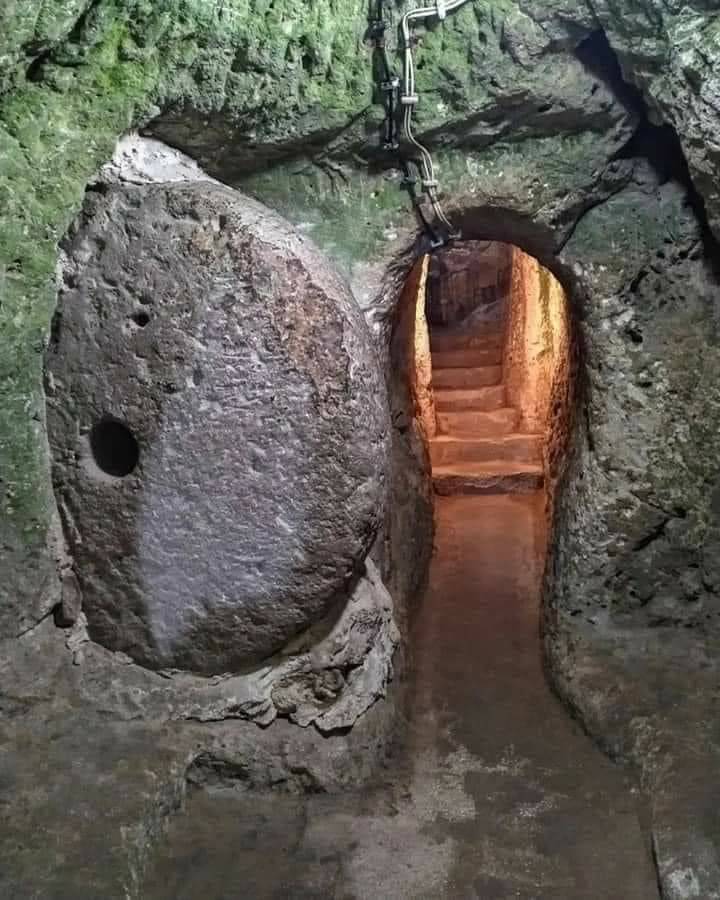
Derinkuyu isn’t the only underground city in Cappadocia. In fact, it’s said to be just one of over 200 underground safe havens that have been discovered carved into the volcanic ash rock, which include Kaymakli near Nevsehir and Mazi near Urgup. Some claim that residents at Derinkuyu could visit other underground cities via an immense tunnel network.
As recently as 2015, National Geographic reported the discovery of yet another underground city under a hilltop castle in Nevşehir during the construction of a local housing project. Rivalling Derinkuyu in size, “the site appears to have been a large, self-sustaining complex with air shafts and water channels.” Initial surveys conducted by Nevşehir University appeared to conclude that the site was 113 meters (371 ft) deep and covered five million square feet (460,000 square meters), making it bigger than Derinkuyu.
Until recently the origin and purpose of the city were unknown. According to the Turkish Department of Culture, the city was built 2,800 years ago in the 8th century BC by the Indo-European Phrygians. It was later enlarged during the Byzantine era, probably by the Christians whom historians believe used it as a hiding place to avoid persecution.
The church that exists in the lowest floor may verify this theory. As recently as the 20th century, it was also used as a place to escape persecution during the Ottoman Empire. Culture Trip explains that the underground city was abandoned from 1923 with the expelling of Christians by the Turkish government and was only rediscovered in the 1960s.
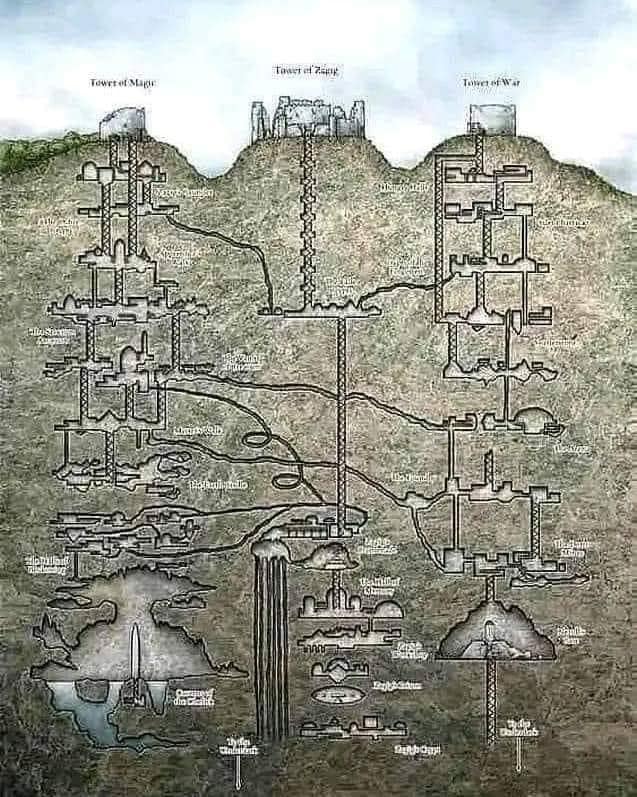
But, there are alternative theories. Some claim that the underground city was built by Anatolian Hittites in the 15th century BC in order to flee enemies. Others have hypothesized that the underground cities were created during the Younger Dryas Event about 14,500 years ago, when a comet broke apart sending segments exploding within Earths atmosphere, throwing dust and soot into the atmosphere blotting out the sun for months, causing temperatures to drop and plunging the world into an Ice Age. This theory posits that these underground cities would have been created at the same time as Göbekli Tepe just 600 kilometers (370 mi) to the east of Derinkuyu.
As usual, there are also those who relate the creation and purpose of these underground cities to aliens. One such theory is that the city was built by extraterrestrial beings who later abandoned the city. Another speculates that the city was created by humans to protect themselves from air invasions by extraterrestrial beings.
As Jim Willis stated in an Ancient Origins article, “only one thing is known for sure. They are there. Someone built them a long time ago, perhaps further back in time than modern archaeologists are willing to admit. The original builders must have had a compelling reason to pull off such an audacious feat, but then they became lost to history, their presence completely forgotten. And no one knows why.”
The ancient underground city of Derinkuyu can be found just 35 km (21.7 mi) south of Göreme. Added to the World Heritage List in 1985, it is now a major tourist destination. Hidden beneath the dusty streets of Derinkuyu, it is open every day and can be accessed by paying an entry fee.
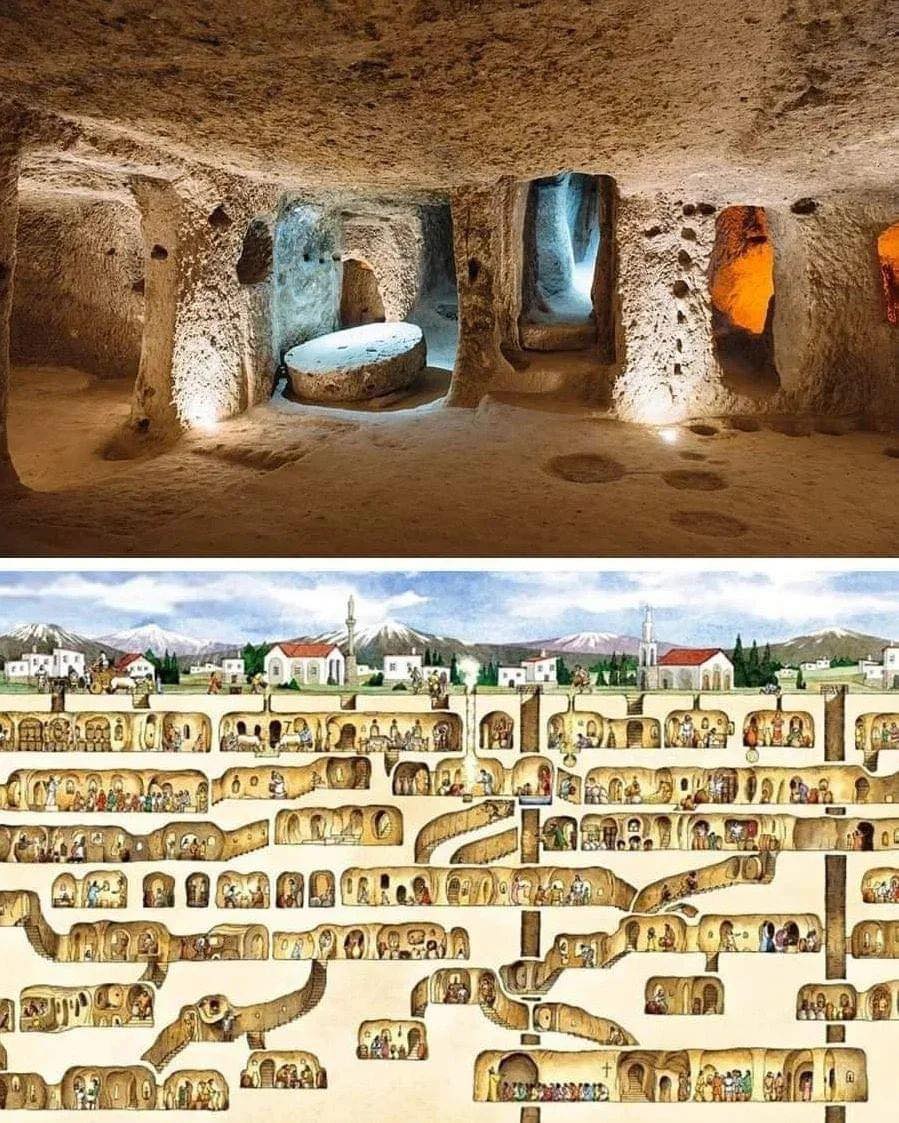
There is little in the way of signage, so you should visit with a guide. The top eight floors are open to the public, but it’s important you’re in good shape as you’ll be moving up and down very steep staircases and through narrow tunnels. This ancient site is not recommended for the claustrophobic.

